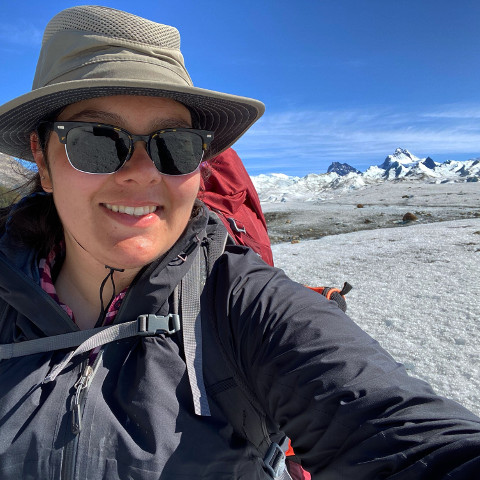Deglacial versus human-induced erosion rates in the Upper Mississippi River Valley
Euro-American settlement irrevocably altered the landscapes of the Upper Midwest and dramatically increased erosion and sedimentation within river valleys.

A house buried by sediment in the Whitewater River Valley (1938). Massive sediment flows were triggered by the introduction of plow-based agricultural practices to the region starting in the 1850s.
Image courtesy of Winona County Historical Society.
Project Framing
This work, published in Geology and featured on Science.org, is focused understanding how changes in climate, glaciation, and land use impact the morphology of river catchments. The project connects landscapes of the icy past from the Last Glacial Maximum (approx. 20,000 years ago) to more modern changes caused by Euro-American agriculture in the Upper Mississippi River Valley.

An example of an organic-rich pre-settlement soil exposed in a riverbank in the Whitewater River Valley. This soil layer was buried by almost 2 m of post-settlement soil deposited after the start of Euro-American agriculture.
Climate, agriculture, and erosion rate
To study post-glacial erosion rates, I use paired cosmogenic 10Be and optically stimulated luminescence dating on samples collected from a river terrace in the Whitewater River Valley, southeastern Minnesota.
I compare my paleoerosion rate chronology to paleoclimatic change to see how climate drove erosion in the past. I then tie these climate-driven shifts to erosion rates after Euro-American was introduced to the landscape.

Pointing to the top of the river bank above the buried pre-settlement soil. All the material between the top of the bank and the buried soil has been deposited after 1850 CE.
I completed lab work for this project at the UMass Amherst Cosmogenic Nuclide Laboratory with Prof. Isaac Larsen and at the Utah State Luminescence Laboatory with Prof. Tammy Rittenour.
To learn more about our findings and this project, check out my paper in Geology or the article about this work on Science.org.


Processing samples for cosmogenic nuclide dating at UMass Amherst. This process involves dissolving quartz grains in hydrofluoric acid and using ion exchange columns to isolate Be-10 for analysis.
Feature on Science.org
In addition to being published in Geology, this project was also featured in an article on Science.org.
Click here to read the Science feature and learn more about this project.

